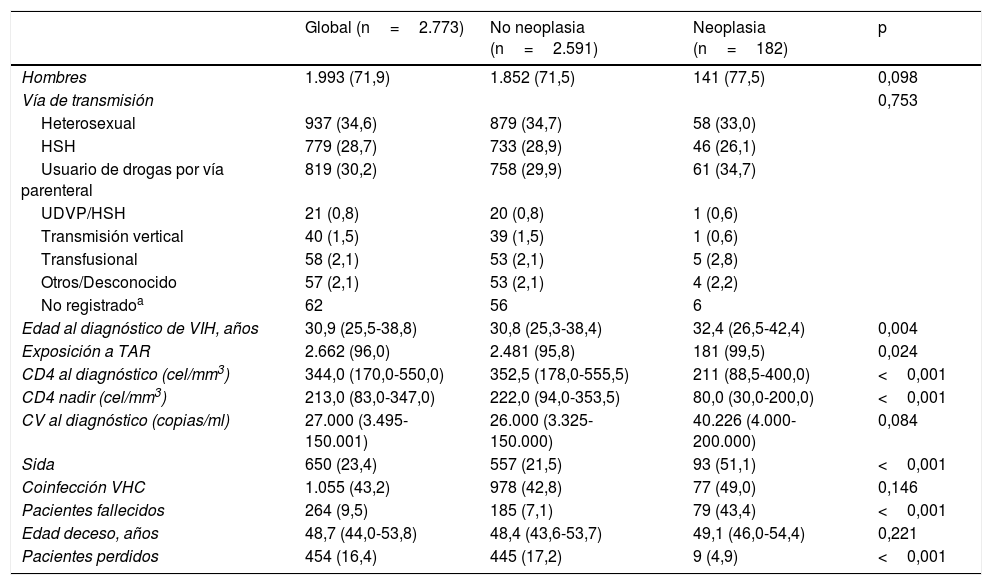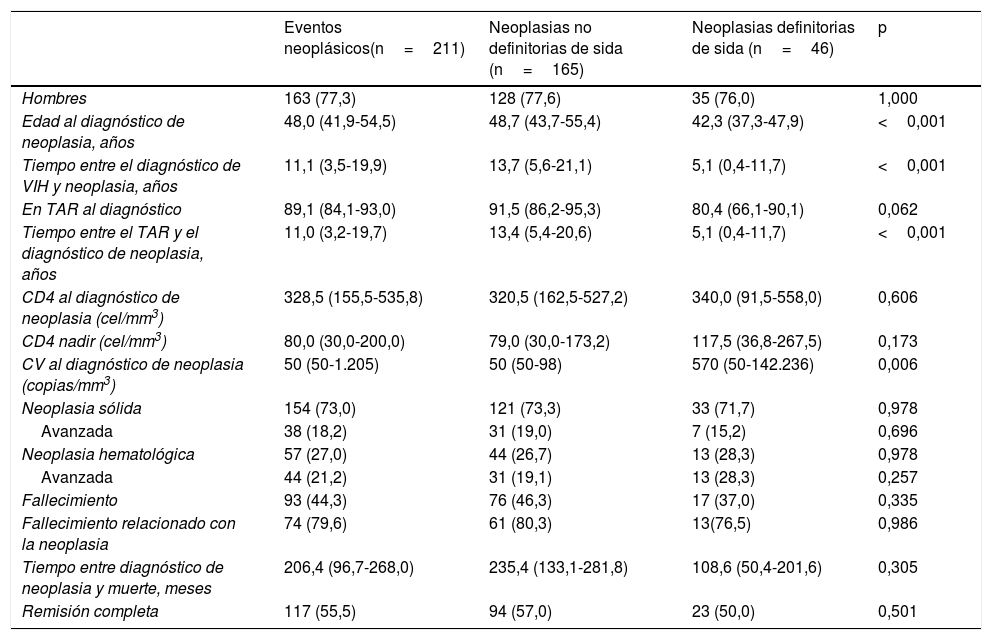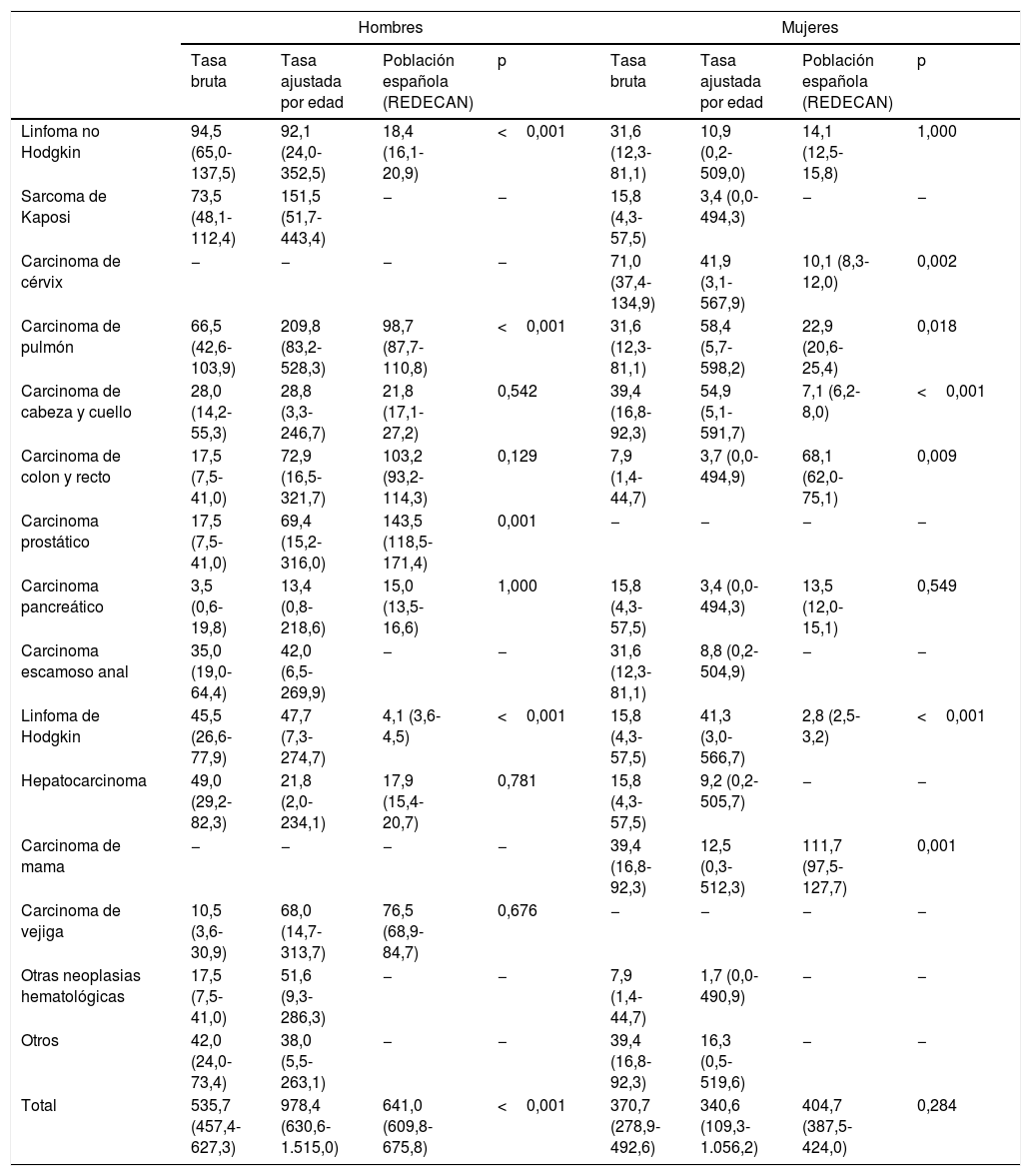Se ha descrito una mayor incidencia de neoplasias en los pacientes con infección por VIH en comparación con la población general.
Pacientes y métodosEstudio observacional retrospectivo de la población infectada por VIH en seguimiento en el Hospital Vall d’Hebron (Barcelona) entre 2009 y 2017. El objetivo de este estudio fue estimar la incidencia de neoplasias en estos pacientes con infección por VIH y su supervivencia. Se comparó la incidencia ajustada por edad y sexo en dicha población con la calculada por la Red Española de Registros de Cáncer (REDECAN) en 2015.
ResultadosSe incluyeron 2.773 pacientes (41.238 pacientes-año). Se diagnosticaron 211 cánceres en 182 pacientes. El 78,2% de las neoplasias fueron no definitorias de sida (NNDS). La tasa global de incidencia de cáncer fue 485 neoplasias por 100.000 pacientes-año. La mortalidad a 20años en pacientes con cáncer fue del 31,2%, y del 7,8% en pacientes sin cáncer. En varones, ajustada por edad, la incidencia de neoplasias fue mayor que en la población general (978,4 vs. 641 por 100.000 pacientes-año, p<0,001); las más frecuentes fueron carcinomas de pulmón, sarcoma de Kaposi y linfoma no Hodgkin. En mujeres, la incidencia no fue mayor a la de la población general (340,6 vs. 404,7 por 100.000 pacientes-año, p=0,27). Las neoplasias más frecuentes fueron carcinomas pulmonares, carcinomas de cabeza y cuello, cérvix y linfoma Hodgkin.
ConclusionesLos varones con infección por VIH presentaron una incidencia significativamente mayor de cáncer que la población española del mismo sexo. Los carcinomas pulmonares fueron las NNDS más frecuentes.
A higher incidence of malignancies has been described in patients with HIV infection compared to the general population.
Patients and methodsObservational retrospective study in patients with HIV infection followed up at the Vall d’Hebron University Hospital (Barcelona, Spain) between 2009 and 2017. The objective of this research was to estimate the incidence of malignancies in HIV patients and their surveillance. Age and sex-adjusted incidence was compared to the incidence calculated by the Spanish Cancer Registry network (REDECAN) in 2015.
ResultsWe included 2,773 patients (41,238 patients-year). Two hundred and eleven malignancies were diagnosed in 182 patients. Non-AIDS defining cancers accounted for 78.2% of the malignancies. The global incidence of cancer was 485 cases per 100,000 person-years. Twenty-year mortality rate was 31.2% in patients with cancer and 7.8% in patients without cancer. In men, adjusted for age, the incidence of malignancies was higher than the incidence in the general population (978.4 vs. 641 cases per 100,000 person-years, P<.001). The most common malignancies in men were lung cancer, Kaposi sarcoma and Hodgkin lymphoma. In women, the incidence of malignancies was not higher than in the general population (340.6 vs. 404.7 cases per 100,000 person-years, P=.27). The most common malignancies among women were lung cancer, head and neck cancer, cervical cancer and Hodgkin's lymphoma.
ConclusionsMen with HIV infection showed a statistically significant higher incidence of malignancies compared to the general Spanish population. Lung cancer was the most common non-AIDS defining cancer.











